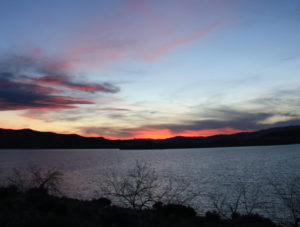 Over this past weekend, we went camping at the Lahontan Reservoir in Nevada. This would be the first time we visited this location and it would also be one of the first weekends the weather started to warm up in the Sierra Nevada mountains. We were both also jonesing for some more camping time after camping on Kalalau Beach a few weeks ago and with warmer weather in the forecast, we loaded up our camping gear and headed into the desert to checkout Lahontan Reservoir.
Over this past weekend, we went camping at the Lahontan Reservoir in Nevada. This would be the first time we visited this location and it would also be one of the first weekends the weather started to warm up in the Sierra Nevada mountains. We were both also jonesing for some more camping time after camping on Kalalau Beach a few weeks ago and with warmer weather in the forecast, we loaded up our camping gear and headed into the desert to checkout Lahontan Reservoir.
Lahontan State Park Recreation Area
Located just east of Silver Springs, Nevada, the 69 miles of coastline creates the Lahontan Reservoir. Also known as Lake Lahontan, the reservoir is part of the Lahontan State Recreation Area. Originally developed to divert and store water to irrigate farms in this rural area, this land serves many other purposes including boating, fishing, hunting, bird watching, and camping. The park is open year round and costs $7 per vehicle for day-use and $15 per night for camping. For more information about the park, check out the Nevada State Parks Lahontan Reservoir website.
Lahontan Reservoir Camping
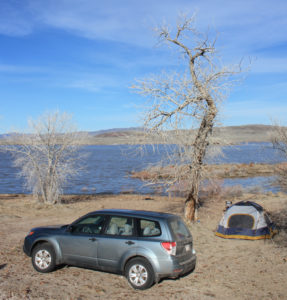 There are amazing camping opportunities at the Lahontan Reservoir. Dispersed camping is allowed in most areas and a large network of gravel and sandy roads lead you around the lake, making beach access and camp spots easy to find.
There are amazing camping opportunities at the Lahontan Reservoir. Dispersed camping is allowed in most areas and a large network of gravel and sandy roads lead you around the lake, making beach access and camp spots easy to find.
Location of Lahontan Reservoir
The Lahontan Reservoir is located off Highway 50, about a one-hour drive from Carson City and about a two drive from Lake Tahoe. Because of the shape of the reservoir, the park is almost split into two sides; a west side (also know as the Sliver Springs side) and an east side (the Fallon side).
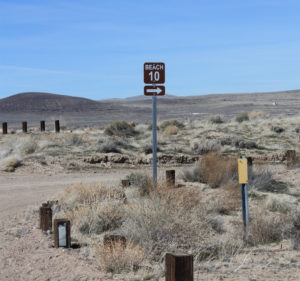 There are a number of entry points into the park with self-serve and drive-through kiosk stations to pay park fees. The signage for these roads aren’t too visible from the highway, so keep your eyes open once you start seeing the reservoir.
There are a number of entry points into the park with self-serve and drive-through kiosk stations to pay park fees. The signage for these roads aren’t too visible from the highway, so keep your eyes open once you start seeing the reservoir.
Once you enter the park and start traveling around the lake, you will notice signage for the more established beach access areas. These signs are labeled as “Beach #”. The condition of these roads can vary so use caution when driving, especially if you don’t have 4WD.
Geography and Climate at Lahontan Reservoir
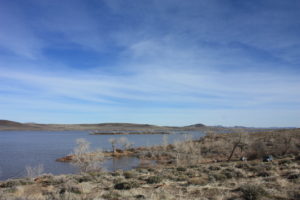 The Lahontan Reservoir is high-desert country at about 4,000 feet in elevation. Summer temperatures often range from the 90’s (degree F) during the day and reach the low 50’s at night. In the winter, visitors can experience highs in the 50’s and lows in the 30’s. The shore around the lake is mostly sand with some rocks. The lake shore is also lined with cottonwood trees and willows which provide excellent shade while camping. The terrain outside the lake and surrounding areas are exposed rolling hills filled with sage brush and grasses.
The Lahontan Reservoir is high-desert country at about 4,000 feet in elevation. Summer temperatures often range from the 90’s (degree F) during the day and reach the low 50’s at night. In the winter, visitors can experience highs in the 50’s and lows in the 30’s. The shore around the lake is mostly sand with some rocks. The lake shore is also lined with cottonwood trees and willows which provide excellent shade while camping. The terrain outside the lake and surrounding areas are exposed rolling hills filled with sage brush and grasses.
Facilities at Lahontan Reservoir
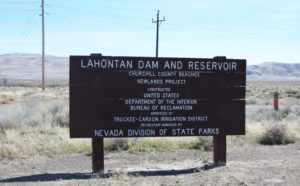 There are a lot of vault bathroom facilities conveniently located around the Lahontan reservoir at the major beach access areas. There is also a fully developed campground facilities located at Beach #7 on the Silver Springs side. For campers with trailers and RVs, there are also dump and water stations located at the entrances to park.
There are a lot of vault bathroom facilities conveniently located around the Lahontan reservoir at the major beach access areas. There is also a fully developed campground facilities located at Beach #7 on the Silver Springs side. For campers with trailers and RVs, there are also dump and water stations located at the entrances to park.
Although most information online states there are bathroom facilities available, all the bathrooms were closed and locked up when we visited the park. We are guessing this is due to the fact that February and other winter months are not popular for camping in the area.
The Lahontan Reservoir And The Drought
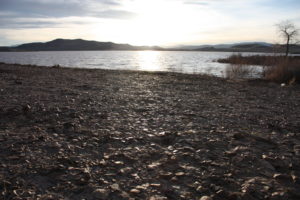 Like most of the west coast, the Lahontan Reservoir was greatly affected by the recent drought years. The water levels in the reservoir dropped so much that the lake dried up into a mere pond. It seemed that this once popular boating destination was doomed and water sports at the lake might become a thing of the past. Then the wettest winter in recorded history hit the west coast in 2016-17, which brought much needed water and started to refill the Lahontan Reservoir quickly. It is projected to be full by this Spring.
Like most of the west coast, the Lahontan Reservoir was greatly affected by the recent drought years. The water levels in the reservoir dropped so much that the lake dried up into a mere pond. It seemed that this once popular boating destination was doomed and water sports at the lake might become a thing of the past. Then the wettest winter in recorded history hit the west coast in 2016-17, which brought much needed water and started to refill the Lahontan Reservoir quickly. It is projected to be full by this Spring.
Hazards at Lahontan Reservoir
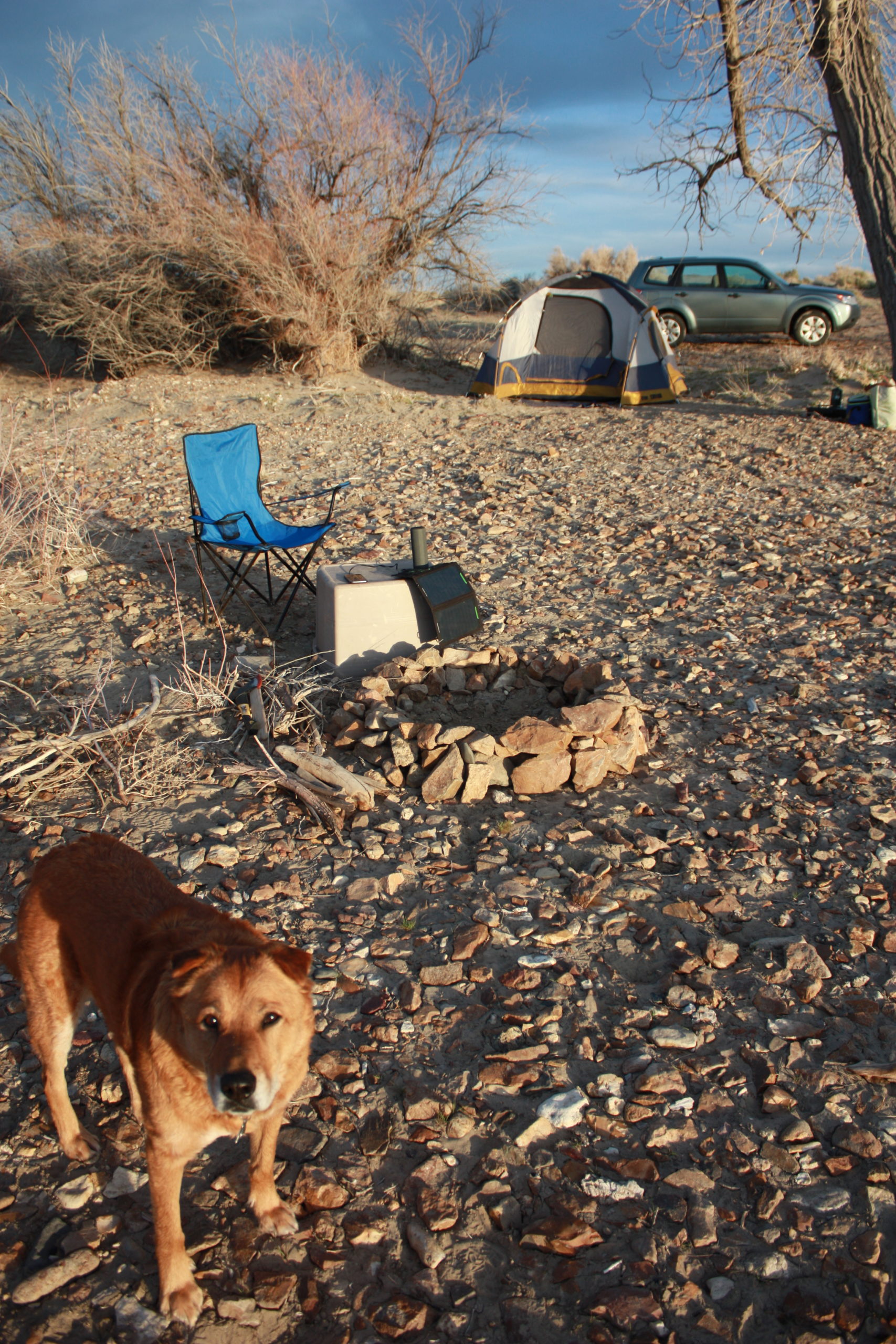 One major hazard at Lahontan Reservoir is the mercury run-off into the lake from the old mines close by. If you’re fishing in the lake, it advised not eat any fish that you catch. The park allows catch-and-release fishing only.
One major hazard at Lahontan Reservoir is the mercury run-off into the lake from the old mines close by. If you’re fishing in the lake, it advised not eat any fish that you catch. The park allows catch-and-release fishing only.
Another hazard to look out for is the getting vehicles stuck in the soft sand or mud on the beach access roads. Use caution when driving these roads and check ahead for soft sand before driving. Cell phone reception is available around the lake if you do happen to get your vehicle stuck and need to call for a tow.
Camping Gear Recommendation
With sunny skies, we made great use of our Allpowers solar charger while camping at the Lahontan Reservoir. It charges quickly and kept our phones charged up all weekend so we didn’t have to worry about battery life while taking photos and listening to music.


Camping Post Comments